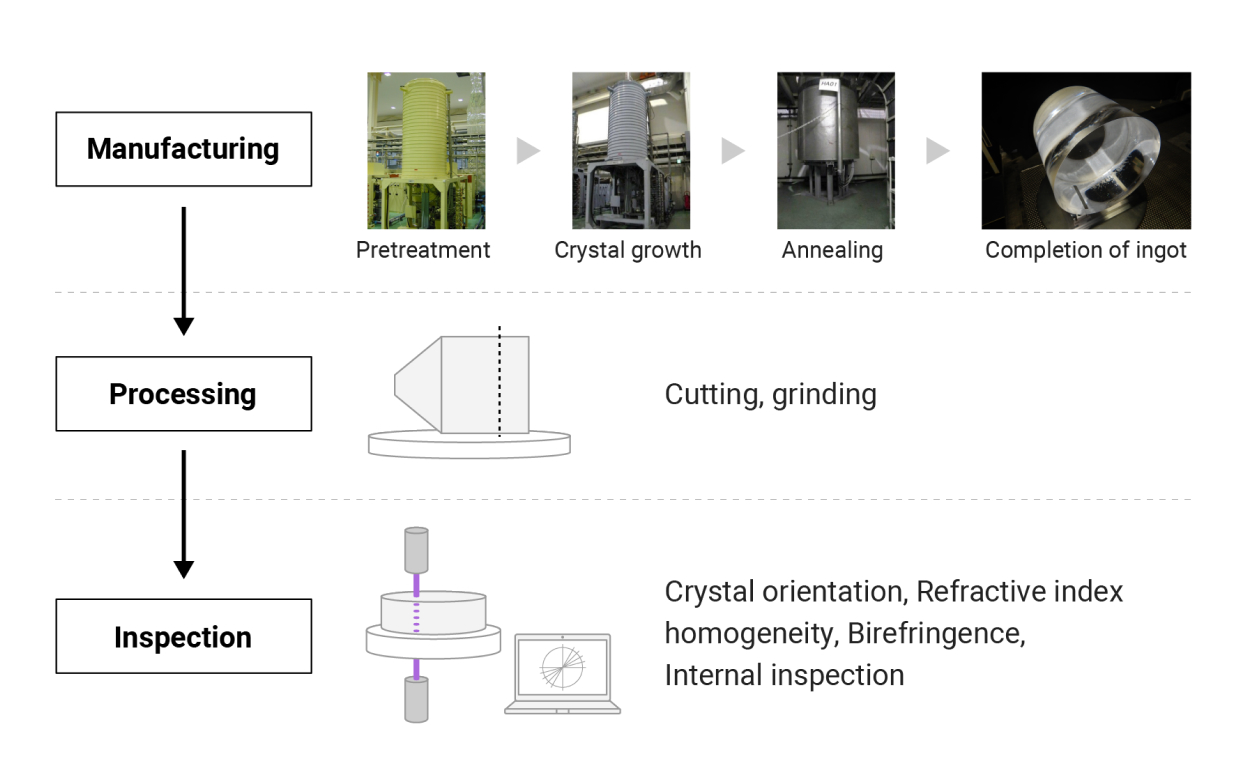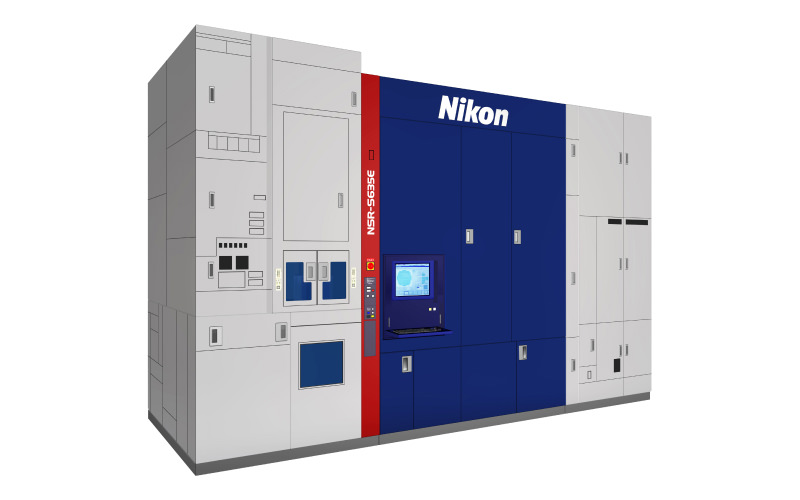Fluorite
Technology Overview
Synthetic fluorite is characterized by high transmittance and a small change in refractive index over a wide wavelength range from ultraviolet to infrared, so it can be used in a variety of optical systems. In addition, the dependency of the refractive index on wavelength in a specific wavelength range is different from that of general optical glass, so by combining them, it is possible to correct chromatic aberration.
As a material, it has a lower specific gravity than optical glass with equivalent optical properties, which is an advantage in terms of reducing the weight of large lenses such as telephoto lenses.
Fluorite is calcium fluoride (CaF2), and although high-quality single crystals have excellent optical properties, they also have problems when processed into optical parts, such as easy scratching and sensitivity to sudden temperature changes. During the manufacturing process, because it is a crystal, it is necessary to melt it at a higher temperature than normal optical glass and grow the crystal. Manufacturing technologies such as reducing impurities and optimizing conditions to grow larger and uniform crystals are important.
Optical components used in semiconductor lithography equipment must have high-quality optical properties and be able to withstand high-power ultraviolet lasers. Even with a large diameter, maintaining refractive index homogeneity is necessary and reduce impurity concentration to the absolute minimum.
Interchangeable camera lenses require a highly productive manufacturing process suitable for consumer products. Fluorite, with its excellent chromatic aberration correction performance, is used in the optical systems of various products.
Technology Application Examples
Telephoto Lenses
NIKKOR Z 400mm f/2.8 TC VR S is a super telephoto lens with a built-in teleconverter, designed for lightweight performance by using fluorite, which is lighter than optical glass, and adopting magnesium alloy and plastic molds with low specific gravity for key mechanical parts, resulting in a lightweight body of approximately 2950g. Additionally, the compact body is designed with professional users in mind and can fit in any airplane carry-on size luggage, allowing it to be kept close at hand with ease.
The longer the focal length, such as with telephoto camera lenses, the more difficult it is to correct chromatic aberration. However, by using a fluorite lens, chromatic aberration can be effectively corrected with a smaller number of lenses. Additionally, since fluorite is lighter than optical glass, it also contributes to reducing lens weight.

Technologies related to these examples
Related Technology
Crystals & Polycrystals
High-quality single crystals, in which atoms and molecules are regularly arranged, have fewer defects than glass of the same composition, resulting in higher light transmittance. On the other hand, crystals have optical and mechanical characteristics due to their anisotropy, which may make them difficult to handle depending on the application. Polycrystals are made by sintering microcrystals, giving them the excellent optical properties of crystals while avoiding the difficulty of handling due to anisotropy, making them suitable for a variety of purposes. Manufacturing them does not require the same high temperatures as in crystal growth, which is expected to result in energy savings.
Nonlinear optical crystals used for wavelength conversion in deep ultraviolet solid-state lasers require high-quality crystals with few defects in order to with stand high-power laser irradiation for long periods of time. Laser resistance is required not only for wavelength conversion purposes, but also when used in optical systems such as exposure equipment. Polycrystalline fluorite has optical properties and low specific gravity comparable to single crystal fluorite, and is expected to be used in a wide range of applications.
Main Related Products
You can search for articles related to Nikon’s technology, research and development by tag.




